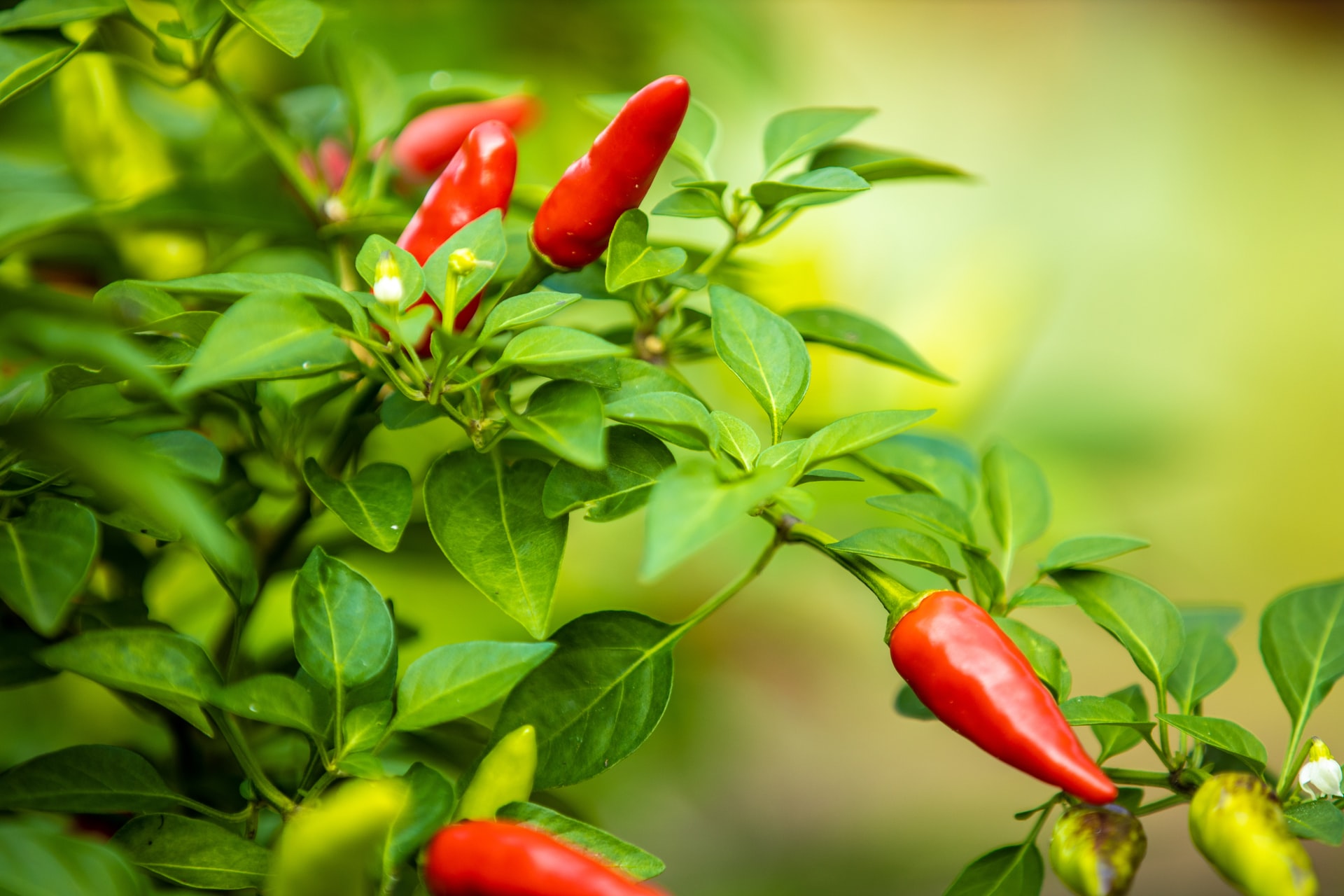Growing peppers in protected environments is quite similar to outdoor cultivation, but these environments allow for the control of microclimatic conditions. This enables shifting the transplanting schedule to times when it wouldn’t be possible outdoors due to low soil and air temperatures. As a result, the fruiting period in protected environments is extended, increasing yield.
The soil in the protected area should be sterilized thermally or chemically before bed preparation and film placement. For chemical sterilization, products that destroy fungi, soil pests, nematodes, and weed seeds (such as Basamid granulate) are used. This type of product is quite aggressive, so it’s important to consider the timing of application.
Protected environments include greenhouses and plastic tunnels.
These environments provide favorable microclimatic conditions for growing peppers and maintain them consistently throughout the entire growing period, regardless of external weather conditions. Maintaining constant microclimatic conditions is achieved through heating (if a heating system is installed) or simply closing all openings of the protected space, depending on the external temperature. On hot days, ventilation and air circulation are also possible. The most favorable daytime air temperature for the growth and development of peppers is 22 – 26°C, and the nighttime temperature is 16 – 20°C. During the summer, ventilation is necessary as temperatures above 30°C can cause flowers and fruit to drop, and temperatures above 35°C negatively impact vegetative growth.
To monitor the microclimatic conditions and maintain consistency, it is advisable to install climate stations in protected environments. These stations provide data on current air temperature, relative humidity, sunlight intensity, and CO2 concentration.
Types of Protected Environments
TYPE A – Low Tunnel: A simple solution often built as a DIY project, without heating, used for seedling production and early-season cultivation. It has a simple construction and no additional equipment. Pepper cultivation is not possible in these tunnels.
TYPE B – High Tunnel, Plastic Tunnel: Often used as a simple, low-cost solution for small-scale production, typically for early-season cultivation without heating. Ventilation is usually passive, achieved by opening doors and side panels. Pepper cultivation is possible.
TYPE C – Typical Single-span Greenhouse with Curved Roof: Typically covered with PE film (polyethylene). Sometimes polycarbonate panels are used for the vertical walls. It can also have a so-called Gothic roof, with an arched profile and a peak in the center. This type of construction is used in areas with heavy snowfall, as snow slides off more easily. Ventilation is provided through openings in the vertical walls, and fans are also used. It is designed for the installation of heating systems, making year-round or nearly year-round cultivation possible. Suitable for pepper cultivation.
TYPE D – Typical Single-span Greenhouse: Uses glass or other rigid covering materials, but film can also be used. Suitable for year-round production. Ventilation can be natural, artificial (fan), or a combination. It is suitable for installing all necessary equipment.
TYPE E – Multi-span Greenhouse: Similar to type C, but with multiple single-span units connected to form a single structure, used for larger areas.
TYPE F – Multi-span Glasshouse/Plastic Tunnel: Similar to type D, with multiple greenhouses connected. The spans can form a unified space or be separated by a wall made from the covering material. If separated, different equipment and production methods can be used in each section. For example, one part may have year-round production with heating, while another part is used for early-season production. This requires separate control for each section. Roofs can have central gutters with sloped sides, or a single slope per span (the other side is vertical).
TYPE G – Venlo Greenhouse/Plastic Tunnel: Named after the city of Venlo in the Netherlands. Unlike the previous type, it can have two central gutters per span. The roof panels can be opened by rotating around an axis at the bottom of the panel, allowing for vertical positioning, which greatly improves natural ventilation.
Single-span greenhouses/plastic tunnels are intended for smaller areas, up to 400 m² (8 x 50 m), and rarely up to 500 m². For larger areas, multi-span greenhouses/plastic tunnels are used.
Factors influencing the choice of protected space:
- Planned cultivation area size
- Plant species to be produced (affects the height of the greenhouse/plastic tunnel)
- Investment possibilities
- Substrate type
- Length of the production season, with or without heating
- Planned future development or expansion of the facility, among others.













































